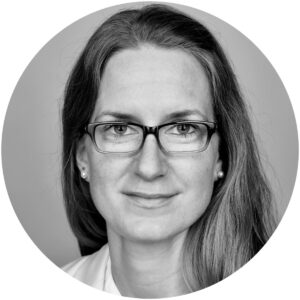Fernfachhochschule Schweiz (FFHS) is home to research and teaching, with some of its research funded by foundations. A recent study on institutions for adults with disabilities illustrates how fundamental, application-focused research at FFHS works.
‘The idea that fundamental research relating to social issues is marketable hits a brick wall time and again,’ says Daniel Zöbeli, director of the Institute of Management and Innovation. He explains that it does not make sense to work towards a business case for every piece of research, as is required by the state funding agency Innosuisse.

‘That’s exactly why FFHS’ research is funded by foundations,’ adds Daniela Mühlenberg-Schmitz, head of the research area and lecturer at FFHS. She is currently leading a study on how support services are recorded and funded at institutions for adults with disabilities in Switzerland (Erfibel).

Hochschule für soziale Arbeit in Olten and Dipartimento economia aziendale, sanità e sociale (DEASS) in Ticino cover the socio-pedagogical aspect, while FFHS deals with the business management. The background to the study is the shift in financial autonomy over institutions that support disabled people from the federal government to the cantons. The aim is to show the disincentives of the current funding models and to propose solutions on how care quality can be maintained despite increasingly tight public finances.
When finances are put under pressure
The Erfibel project has a social background. ‘It’s not about a hard-nosed business case,’ emphasises Mühlenberg-Schmitz. Instead, she says, it’s about learning what it actually means for people with disabilities when finances are put under pressure. ‘Cantons and institutions need to clarify the situation with each other,’ the researcher stresses. ‘Cantons are switching from a deficit guarantee to a flat-rate budget. They determine funding on the basis of individual care needs [IBB], for which a performance grid is used,’ she explains. The analysis shows that cantons value the institutions’ decision-making autonomy much more than the institutions themselves. They are highly satisfied with the execution and introduction of the IBB. However, some institutions believe the grid has flaws. They see a violation of the rights of disabled people, such as their right to a free choice of institution; e.g. if those who require a high level of care cannot obtain a suitable place due to a lack of funding. The study has met with a large amount of interest. ‘Every canton and 40% of institutions were involved,’ says a delighted Mühlenberg-Schmitz, adding: ‘It’s about a lot of money, 3% to 4% of a canton’s budget, and there are about 600 of these institutions. That’s something that interests the public, too.’
Not about people, but with them
‘Today, a lot of research is done on people with disabilities but it is not undertaken with them,’ explains Mühlenberg-Schmitz, ‘and we want to do that differently.’ The detailed follow-up questions in the second part of the study will be answered by people with disabilities. ‘Institutions tell us about certain cutbacks,’ explains the researcher, ‘and now we want to understand and verify where and how disabled people perceive this reduction in performance.’ The second phase of the study is also financed by foundations. ‘This project has shown us how important fundraising expertise is when it comes to making an application,’ adds Zöbeli. ‘Seeking funding from a foundation is a demanding, time-consuming task. We still do not have the full amount for the second phase.’ The lesson is that one needs to build up a trust-based relationship with the foundations and show them the social benefits of the research projects. Often someone is needed to open the door, he explains. When the second phase is completed, the aim is to develop more sustainable models for facilities for the disabled. ‘We would like to use the analysis to make a recommendation and develop a few prototypes,’ emphasises Mühlenberg-Schmitz, ‘and if we want to do that, we need to find more money.’ The aim is to give the institutions the tools to satisfy the financial framework conditions as well as their own care concepts. ‘It’s not a contradiction in terms – we can see good examples of this in practice already.’
Pioneer of part-time distance learning in Switzerland
‘At FFHS, 80% of learning takes place online in the form of blended learning, and it’s been that way for 20 years,’ explains Zöbeli. At present, about 2,500 people study across all their sites, with 140 employees and 400 lecturers. FFHS was founded in 1998 to provide people, specifically those who live in remote valleys, with education and further training. FFHS is now supported by Stiftung Fernfachhochschule Schweiz. Part of its research focuses on non-profit organisations, with questions relating to funding, governance and transparency. It has already published a number of studies in collaboration with the Center for Philanthropy Studies (CEPS) in Basel; for example, board of trustees’ fees and external NPO mandates.


